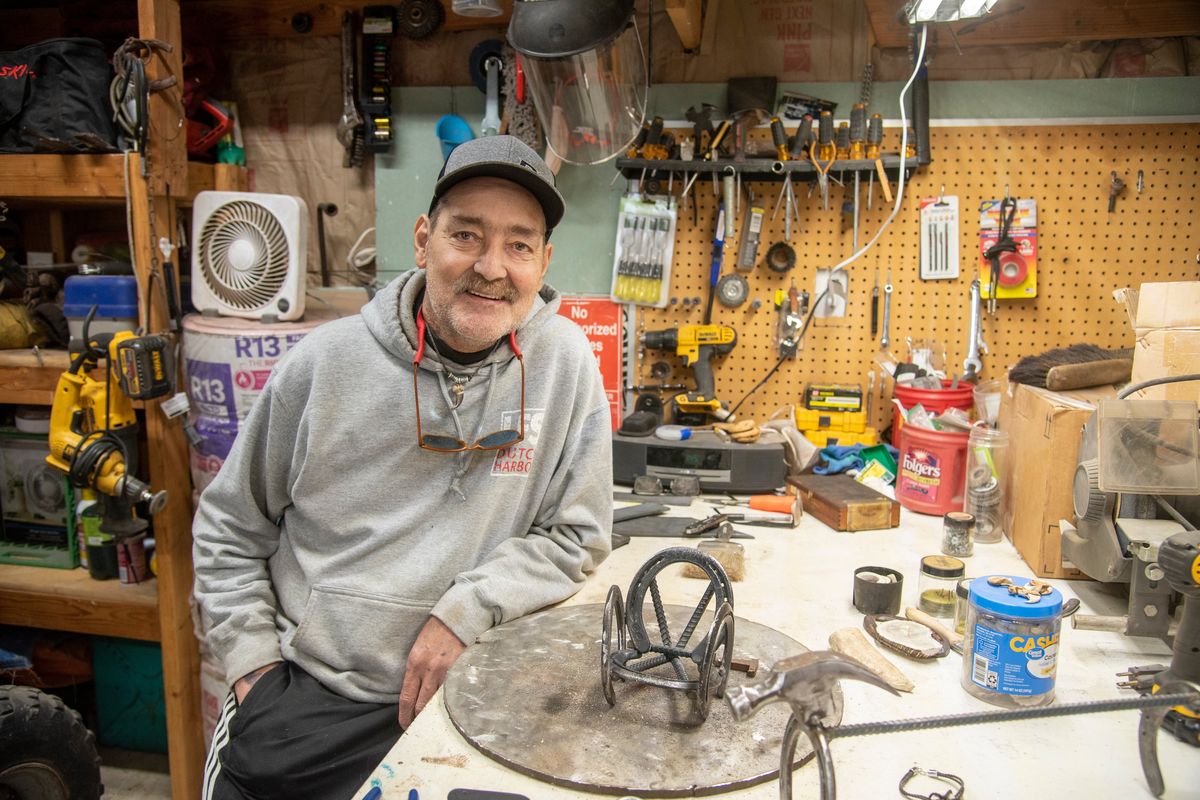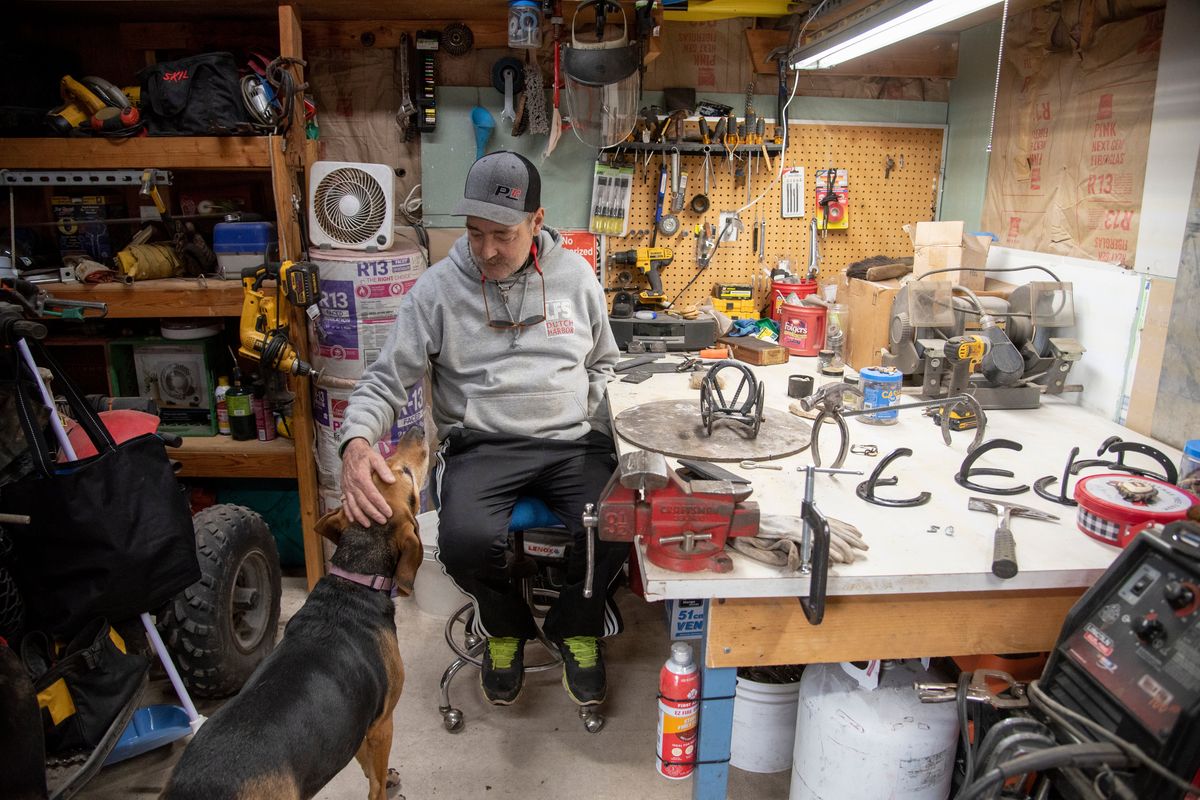In the driver’s seat: Total Artificial Heart recipient receives two donated organs

Greg Soumokil has returned to the driver’s seat, navigating again toward bucket list goals – and soon – the family boat with a new decal on the stern: “No bad days.”
It’s a motto he used when battling heart failure, and it’s now a fitting message for recovery and a return to daily pursuits.
“It’s kind of my saying the whole time I was in the hospital,” Soumokil said. “It’s a Cabo saying. I have hats and T-shirts that say that.”
Today, he talks about plans for fishing, hunting and travel thanks to a donor heart and kidney after organ transplant surgeries this past fall.
Recovering since then, he recently reflected on another milestone one year ago that kept him alive during a four-month wait – a Total Artificial Heart device. In May 2021, Soumokil became the first person to leave Providence Heart Institute with a TAH. The rare medical device is meant to be a bridge to a heart donor match.
“I’ve been through a lot, let me tell you,” said Soumokil, who turns 58 next month. “I’m just grateful to be here. The heart team at Sacred Heart, I wouldn’t be here without them, absolutely.”

Soumokil also got that prior respite to return to his Otis Orchards home thanks to another relatively new device, an external Freedom Portable Driver with a pump and system to create calibrated pulses of air and vacuum for the heart mechanism. His wife, Donna, and relatives helped with his caregiving needs. He used a walker, at first from being weak and later to help carry the driver.
But Soumokil couldn’t drive a vehicle, or the boat, when he had the artificial heart. He loves to drive.
“The Total Artificial Heart with the pump was considered life support,” Soumokil said. “I’m not the type to sit home all the time.”
However, he and his family did spend a week this past summer with grandkids at Lake Roosevelt, although the boat broke down. Now, the boat’s ready to go, and so is Soumokil, after that one memorable call.
“Sept. 24, we got the call, when we were on our way to a doctor’s appointment,” he said. “The coordinator said, ‘We have a match, a good heart and kidney. Are you ready?’ So, we ended up turning around, packed a bag and checked in that day. The heart surgery took place on the 25th and the kidney on the 26th.
“I was excited, obviously, and a little bit nervous. After the surgery, it took a few days for it to sink in that you have a new heart and new kidney here, and you don’t have that machine connected to you anymore.”
Dr. Cristy Smith, his heart transplant surgeon, said a heart-kidney donor came through earlier than expected for Soumokil, plus he benefited from being home for a few months to regain some strength.
Before the TAH, Soumokil’s heart failure worsened despite medications, a balloon pump and time on a heart-lung machine. He’d spent 97 days in the hospital.
The TAH brought him time. Part of the process to find donor organs includes comparing a recipient’s blood against a panel of donor blood samples from the local blood bank, Smith said. The hospital team can then evaluate a patient for how difficult or easy it is to match them with a donor using what’s called panel reactive antibodies, or PRA.
“The higher percentage on your PRA, the more likely you’ll react negatively because your body has already made antibodies against that heart and is more likely to reject the heart,” Smith said. “Greg’s PRA was higher than we wanted it to be. We figured based on his PRA that he would wait several months. We got lucky. We had a few potentials that didn’t turn out OK, and then we finally found the one.”
Since his discharge Oct. 12, Soumokil has had a few setbacks, including a back injury that slowed his physical therapy and cardiology rehabilitation. He’s turned to creating art by welding together horseshoes and making jewelry from shed elk antlers collected over the years.
He hopes to sell those items at a local farmers market.
“It’s necklaces, and I have a ton of earrings,” he said. “I have a little workshop out back there just to keep busy. Recently, I picked up doing horseshoe art. A portion of the proceeds will go to LifeCenter Northwest, the organ donor place that coordinates all this.”
Soumokil said he’s scheduled soon to return to physical therapy and rehabilitation. If all pans out, he hopes to work again for a mechanical contractor and travel to see relatives in Cabo San Lucas and Amsterdam. “My bucket list keeps growing,” he added.
He’s mostly looking forward to summer days on the 19-foot ski boat with four grandchildren, including two teenagers who can drive it now. “Boat, lake time; that’s all I can think about is getting out on the water.”
From a doctor’s perspective, it takes a miracle second to get someone like Soumokil back to living life again.
As the heart surgeon, Smith goes to a site to look at a potential heart that would come from a deceased donor, which in this case was at another hospital. With her go-ahead, it meant a call to a Sacred Heart team surgeon to begin opening Soumokil’s chest to receive the heart.
“We have to take the heart out of the donor and make it go to sleep, essentially, and put it in ice, and then transport the heart,” Smith said.
“When you hook everything back up, you sew everything together, you get the blood flow going again, there is always that moment when you first take that clamp off, when you start delivering the blood into the heart, when you’re waiting for it to do that first beat, that is just a magical moment. You breathe that sigh of relief as you see that new heart start to pump.”
Such a donor heart is only viable for four hours, she said, but a kidney can go longer on a tiny pump device. Surgeons wait to make sure the donor heart is functioning well after transplant surgery before another organ is placed. After both procedures went smoothly, Smith was able to deliver the news in person.
“Greg is such a positive guy,” she said. “We had talked to him ahead of time, that we never know until we get there, and there’s a possibility you could wake up, and we haven’t done it. He had no doubt.
“When he was really awake, I was able to grab his hand and say, ‘We did it. It’s a beautiful, strong heart, and you have a great kidney.’ From the moment I walked in the room, he was just upbeat, all smiles.”
Smith credits Soumokil’s positive attitude and perseverance.
“You’ve never seen someone so willing or determined to get better,” Smith said. “I truly believe that he did so well getting out of the hospital with a heart transplant because he was able to have that kind of attitude, and that’s all him. That’s nothing we can give him. He’s an amazing guy.”